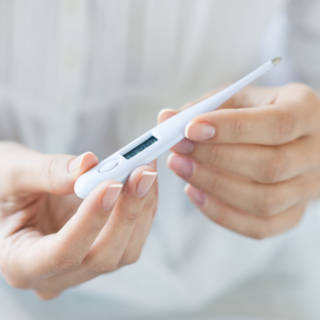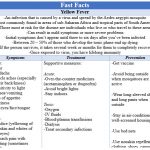Where is it a problem?
You’re planning a trip to South America. You go to your doctor to find out if they recommend any vaccinations before traveling. She tells you that one of the things you should consider getting is a vaccine for yellow fever. What is this? Why should you want to prevent it?
 Definition
Definition
Yellow fever is an infection that is caused by a virus and spread by the Aedes aegypti mosquito. It’s most commonly found in areas of sub-Saharan Africa and tropical parts of South America. This is why those most at risk for the disease are individuals who live in these areas or people who travel to them. The virus can result in mild symptoms or more severe problems. The initial symptoms don’t appear until three to six days after you’ve been infected. The beginning part of the infection is referred to as the acute phase. During this portion, the person often experiences fever, headache, muscle aches (especially in their back/knees), sensitivity to light, nausea/vomiting, loss of appetite, dizziness, and red eyes/face/tongue. These improve and disappear within several days. If you have traveled recently to an area where the disease is prevalent and have any of these symptoms, you should call your doctor.
Some individuals progress to the next part of the infection, or toxic phase, a few days after the acute symptoms go away. These are more severe and can be life-threatening. They usually include jaundice (yellowing of your skin and whites of your eyes), stomach pain with vomiting (sometimes blood), decreased urination, bleeding from your nose/mouth/eyes, slow heart rate, liver/kidney failure and brain dysfunction (ex. delirium, seizures and coma). If you have any of these symptoms, you should seek emergency medical care. Unfortunately, between 20 – 50% of those who develop the toxic phase end up dying. If the person survives, it takes several weeks or months for them to recover completely. While anyone is susceptible to contracting yellow fever, elderly adults, children, and those with compromised immune systems are more at risk of becoming seriously ill. Also, if you develop the toxic phase, you’re chances of having a secondary bacterial infection increases dramatically.
Treatment
Currently, there isn’t a specific treatment for yellow fever. Antiviral medications haven’t been proven to be helpful. This means that the best treatment plan is to provide supportive measures. For mild cases, this can be taking over-the-counter medications to provide relief of symptoms, such as acetaminophen or ibuprofen to deal with fever and body aches. It means avoiding bright rooms or going outside if you’re sensitive to light. Your doctor will also recommend that you avoid going outside to prevent being bitten by a mosquito and potentially passing the disease to someone else. It’s important to note that once you’ve had yellow fever, you can’t get it again because you have immunity to it.
For severe infections, the most vital thing is providing adequate fluid and oxygen to maintain blood pressure and perfusion. Another aspect of this is to replace any blood loss you’ve experienced with blood transfusions and to improve clotting through transfusions of plasma. It’s likewise essential to administer dialysis if you end up in kidney failure. If you develop any other infections, those need to be treated as well.
Prevention
There are several ways to prevent yellow fever. The most effective is the vaccine. If you know that you’re going to be traveling to an area where the disease is common, you should speak to your doctor about getting it. The preferred time table to receive it is at least four weeks before you leave on your trip. You need to get it at a minimum of 10 days before you go. The vaccine is so effective at preventing the disease that some countries require proof that you’ve been vaccinated when you enter. The vaccine is considered safe for individuals between the ages of 9 months and 60 years old. A signal dose of the vaccine can provide protection for at least 10 years.
Besides getting the vaccine, there are other things that you can do to reduce your chances of contracting yellow fever. It’s a good idea to avoid any unnecessary outdoor activity when mosquitoes are most active. If you’re going to be outside at any point, wear long-sleeved shirts and long pants. If possible, stay in air-conditioned or well-screened housing. If these aren’t available, use bed nets (some are even treated with insecticides to offer an additional layer of protection). Using repellents can keep mosquitoes away from you. The first type is nonskin repellents, that are designed to be put on your clothing, shoes, camping gear, and bed nets. Skin repellents are applied directly to the skin and come in many different concentrations. This is important because the concentration level is tied to how many hours you need it to work. The higher the level, the longer it’ll last. It’s critical to note that these products can be toxic to children, so never put it on their hands and don’t put them on children under two months of age.
When traveling, the last thing that you want to come home with is yellow fever. The good news is there are things that you can to decrease your chances. If you have any questions or concerns about yellow fever, please speak with your doctor. If you would like more information, please visit the Center for Disease Control and Prevention’s (CDC) yellow fever page at https://www.cdc.gov/yellowfever/index.html